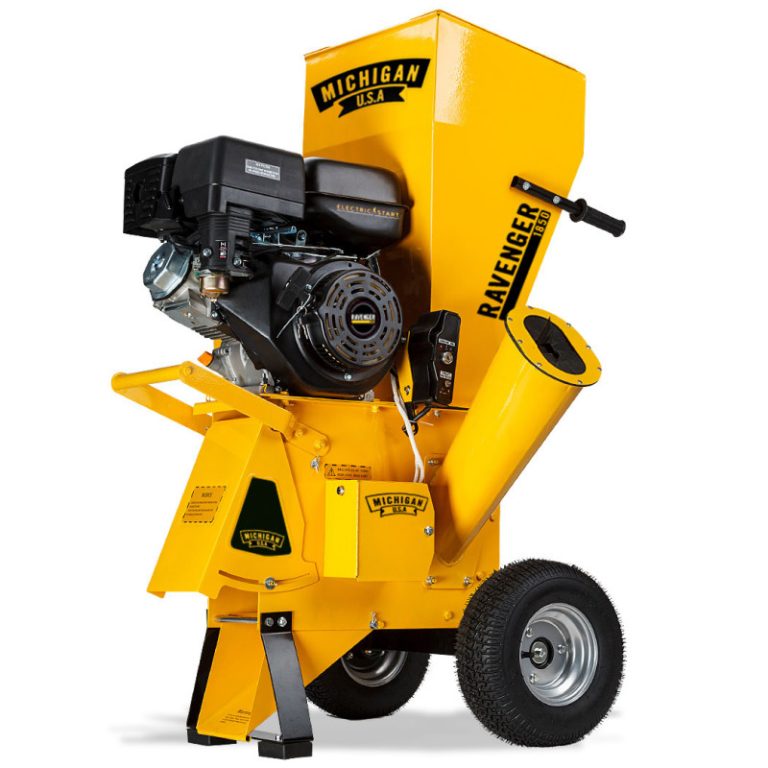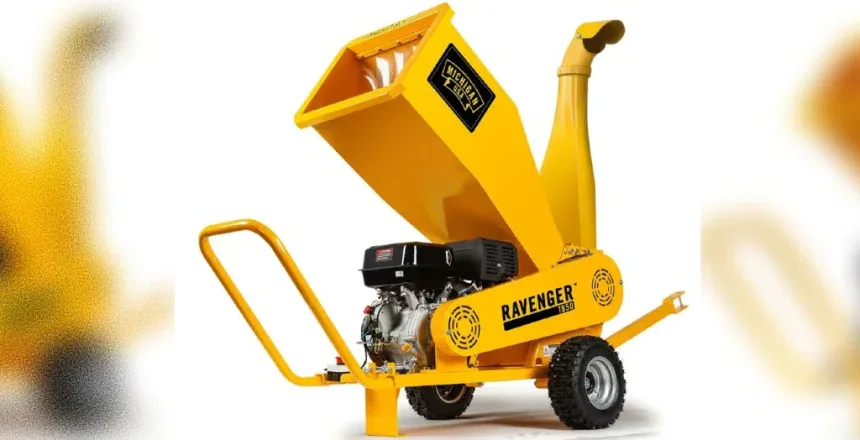Best Garden Mulcher Australia – Buyer’s Guide & Review (2025)
Excerpt: Looking for the best garden mulcher Australia has for faster clean‑ups and safer fuel‑reduction around the home or shack?
This practical guide compares real‑world models, explains safe use, and shares pro tips from bush crews and weekend warriors alike.
On This Page
Overview
A garden mulcher (also called a chipper or shredder) turns branches, prunings, and scrub into useful mulch for gardens or easy‑to‑bag waste.
For rural blocks and regional towns, mulchers support year‑round fuel reduction by processing fine fuels that would otherwise become burnable litter.
In this guide we identify the best garden mulcher Australia homeowners, hobby farmers, and community volunteers can rely on, with a focus on safety, reliability, and value.
We look at petrol chippers (15–18 HP class) that handle Australian hardwoods, and compact electric units suited to metro courtyards.
You’ll learn how they work, how to choose capacity by branch size, what safety devices matter, and how to maintain the machine so it starts first pull at the end of winter.
Whether you’re tidying a verge after a storm, clearing around a shed for the Fire Danger Period, or processing orchard cuttings,
the right mulcher reduces trailer runs, cuts tip fees, and turns waste into moisture‑retaining mulch that protects soil through dry spells.
Best Garden Mulcher Australia: Key Features
Engine & Power
Petrol units in the 15–18 HP range (420 cc class) deliver enough torque for dry eucalypt branches up to 100 mm (species dependent).
Chute & Hopper
Dual inlets (straight branch chute + hopper for leafy material) improve throughput and reduce clogging when feeding mixed garden waste.
Cutting System
Two reversible blades on a flywheel or drum give aggressive bite. Hardened steel with accessible service ports speeds up blade changes.
Safety & Controls
Dead‑man stop, emergency bar, intake guards, and belt covers protect users. Look for clearly labelled on/off and choke positions.
Mobility
Wide‑track pneumatic tyres and balanced handles matter on gravel or paddock ruts. Tow lugs help reposition by hand (not for road towing).
Throughput
For residential workloads, 6–10 m3/hr is realistic with mixed feed. Leafy feed reduces capacity; straight, dry sticks increase it.
How It Works
Mulchers use a high‑inertia flywheel or drum spun by the engine to drive blades that slice material into chips.
Branches enter the straight chute where the blade set takes a bite; leafy waste goes into the hopper where flails or the blade edge shred it finer.
Chips exit via a discharge chute into a bag, wheelbarrow, or onto beds as mulch.
For best results, sort material roughly by size and dryness. Feed with the branch butt‑end first, maintain a steady push with a push stick (never hands),
and allow the flywheel to recover between big bites. Avoid rocks, nails, wire, and soil contamination which blunt blades and can eject dangerously.

Benefits & Advantages
Fuel ReductionTurning fine fuels into mulch lowers bushfire risk around sheds, fence lines, and tanks when combined with mowing and rake‑down.
Soil HealthMulch suppresses weeds, slows evaporation, and adds organic matter. Useful during long, hot spells and in windy, sandy soils.
Cost SavingsFewer tip runs and paid green waste pickups. Rural users can process storm debris on‑site instead of burning piles.
PreparednessAfter storms, mulchers speed clearance of blocked driveways and tracks for emergency access, reducing downtime for families and farms.

Limitations & Safety Considerations
- Noise & PPE: Petrol units are loud. Wear ear muffs (SLC80‑rated), safety glasses/face shield, gloves, long pants, and steel‑caps.
- Kickback Risk: Knotted, springy branches can whip back. Keep a firm stance, stand to one side of the chute, and use a push stick.
- Hardwoods & Gum: Very dry eucalypt can be tough on blades; reduce feed rate and sharpen regularly.
- Clogging: Wet, leafy loads can clump. Alternate with dry sticks and clear the discharge chute before it backs up.
- Slopes: Operate on level ground; chock tyres. Never tow on roads unless the unit is trailer‑rated and registered.
- Hot Surfaces: Mufflers and housings get hot. Allow cool‑down before servicing or storing in sheds.
- Fuel Handling: Store petrol in approved containers; refuel only when the engine is off and cool.
User Scenarios
Volunteer Brigade Prep Day
Community volunteers organise a weekend tidy around the hall. A petrol chipper processes storm‑blown limbs, reducing trip hazards and creating mulch for bare patches near water tanks.
Hobby Farm Orchard
Autumn pruning generates piles of apple and pear branches. The owner chips to 10 mm mulch, spreading under rows to suppress weeds and retain moisture before summer.
Suburban Clean‑Up
A small courtyard with citrus trees uses a compact electric shredder for thin branches and palm fronds, avoiding green‑bin overflow fees.
Maintenance & Care Guide
Reliable chipping comes from regular checks. Before each use: verify oil level, fuel freshness, blade tightness, and clear guards.
After use: idle to clear debris, brush down, and store under cover. Keep a spare set of blades and belts so downtime is measured in minutes, not weeks.
- Blades: Inspect every 2–4 hours of heavy use. Sharpen at 30° (or as specified). Replace if chipped or below minimum length.
- Belts & Tension: Check for cracking or glazing. Re‑tension to spec so the flywheel spins without slip on load.
- Engine Oil: First change at 5 hours, then every 25–50 hours. Use the grade recommended for Australian summer temps.
- Air Filter: Clean frequently in dusty conditions. A clogged filter robs power and increases fuel use.
- Fasteners: Vibration loosens bolts. Use thread‑locker on blade bolts and re‑torque guards after the first few hours.
- Storage: Let it cool, cover, and keep dry. Drain fuel or use stabiliser if storing for months.
Comparison Table
| Model | Type / Engine | Max Branch | Use Case | Pros | Cons |
|---|---|---|---|---|---|
| 18 HP 420 cc Petrol Chipper/Mulcher | Petrol, 4‑stroke, belt drive | Up to ~100 mm* | Acreage, storm clean‑ups, hardwoods | High throughput; handles mixed loads | Noisy; needs regular blade care |
| 15 HP Petrol Chipper | Petrol, 4‑stroke | Up to ~75–90 mm* | Lifestyle blocks, orchards | Great value; simpler maintenance | Less grunt on dry gum |
| 2400 W Electric Shredder | Electric, 240 V | Up to ~35–45 mm* | Small metro gardens | Quiet; plug‑and‑play; low maintenance | Limited branch size; extension lead drag |
*Maximum branch size depends on species, dryness, knots, and feed technique.
Browse a range of petrol and electric garden mulchers ideal for Aussie yards and acreage.
FAQs
What size mulcher do I need?
Match the largest typical branch you’ll process. For acreage and storm debris, a 15–18 HP petrol unit is versatile. For courtyards, a 2400 W electric shredder suffices.
Can mulched eucalyptus go on garden beds?
Yes. Chip size and moisture matter more than species. Let chips age a little if very fresh; add nitrogen (compost/manure) to balance.
How often do blades need sharpening?
Light domestic use: inspect every few sessions. Heavy hardwood work: touch up after each long day. Keep a spare pair on hand.
Is an electric mulcher worth it?
For thin branches and leafy waste, yes—quiet and low‑maintenance. For heavy limbs or storm clean‑ups, petrol wins on throughput.
What PPE should I wear?
Hearing protection, safety glasses/face shield, gloves, long pants, and steel‑cap boots. Tie back hair and avoid loose clothing.
Can I chip bamboo or palm fronds?
Yes, but they can be stringy and clog. Alternate with dry sticks, keep blades sharp, and clear discharge often.
Do I need council approval?
Generally no for small pruning. For tree removals or protected species, check local council guidelines and state rules.
Will it chip wet wood?
It will, but throughput drops and clogging rises. Mix wet with dry and reduce feed rate.
Where to Buy (Australia)

Links & Manuals
Emergency Contacts Quick List
- Triple Zero (000): Fire, Police, Ambulance
- SES (132 500): Storm & flood assistance
- Poisons Info (13 11 26): Chemical exposure, fuel ingestion
- Local Council: Green waste and tree‑pruning regulations
Keep machines accessible for emergency crews. Maintain clear access to gates and water points.
Quick Maintenance Tips
- Fresh fuel only; stabiliser for storage over 30 days.
- Sharpen or swap blades before a big job.
- Clear discharge and hopper after wet loads.
- Check belt tension every few hours in dusty conditions.
- Record hours and consumables in a simple logbook.
For Professionals
Running multiple units on a brigade work bee or contractor crew? Nominate a spotter, standardise PPE, use cones to mark the feed zone, and rotate operators every 20–30 minutes to reduce fatigue. Keep a first‑aid kit and eye‑wash within 20 m.
Credits & Review Notes
This review blends hands‑on experience from Australian yards and rural properties with safety‑first operating practices.
Specifications are indicative and vary by brand. Always confirm capacity, safety devices, and warranty with the seller before purchase.



